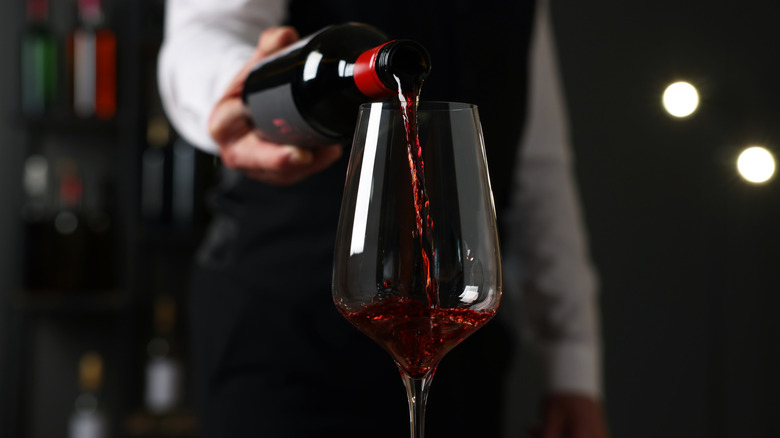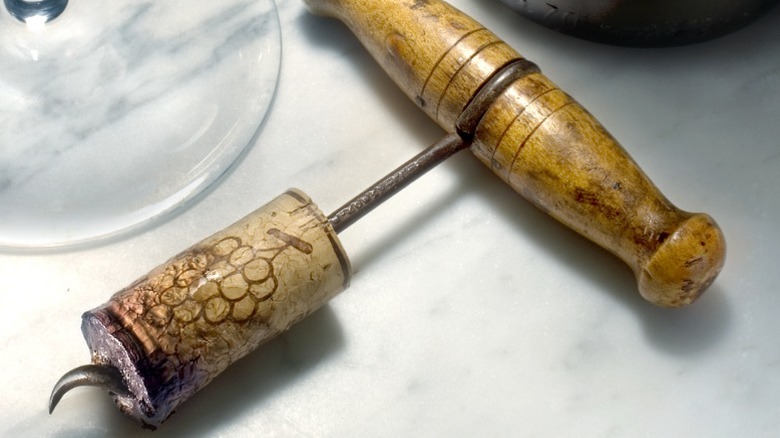The Proper Way To Send A Bottle Of Wine Back Without Being A Jerk
Ordering a nice bottle of wine at a restaurant can feel like an intimidating task. This is especially true at high-end establishments when the wine list often arrives in a laminated 20-plus-page binder neatly organized by wine region and varietal. Having a sommelier assist your final decision is helpful, but what happens if you truly don't like the wine or you notice the taste is off? Although it can feel nerve-wracking in the moment, you can politely and tactfully send the bottle back without looking like a snob — for multiple reasons.
The key to returning a bottle of wine is to honestly and graciously describe the situation to your server or sommelier and request a replacement bottle or something completely different. If there's a fault with the wine, sommeliers and servers would prefer to see you happily enjoying your glass instead of leaving it at the table untouched. Giving plenty of detail helps the staff understand what went wrong and how to get you a bottle of wine that you'll enjoy.
What is a flawed wine?
When you select a bottle from the wine list, your server or sommelier will open it and pour a small sample for you (or someone else at your table) to taste. This is your opportunity to observe the wine's color, clarity, aroma, and taste. If the wine's bouquet reminds you of a moldy basement or it tastes like damp newspaper, it's possible the wine is "corked," or corrupted by the presence of 2,4,6-trichloroanisole (TCA) — a compound that comes from a reaction between natural organisms and pesticides and fungicides that were once used widely on cork trees. Cork taint happens to about 3% of wines that use natural cork.If you believe your bottle is tainted, kindly explain this to the waitstaff, and they will be more than happy to offer you a fresh bottle.
Another perfectly acceptable reason to gently decline a wine is if bits of cork make their way into your glass. This can happen during the opening and decanting process, especially if you've requested an older bottle.
Wine can also be considered faulty when it has been impacted by oxidation. When oxygen touches wine, it's usually due to a damaged cork or seal. This free flow of air can slowly turn the wine into vinegar over time – it will taste notably sour. You can also identify oxidation in wine when it turns a dull, brownish color. If you're at all unsure, the wine professional at the restaurant will take the bottle from the table and sample it themselves to confirm that something is in fact wrong with the wine.
How to return a wine you just don't like
Once or twice, I've seen a patron order a wine that they don't like. Some wine professionals feel strongly that disliking a wine is not a good enough reason to send a bottle back. However, many others want the customer to get a bottle they love, no matter what. For me, it's not a big deal, and I'm happy to get them something else. What's more important is that they share what they don't love about the wine. Is it too oaky, too acidic, or too sweet? Maybe the tannins in the wine are too present or the type of wine doesn't pair well with the steak you ended up ordering. By sharing this valuable information, it's easier for me to assist them in finding a better, more suitable wine match based on their personal tastes and preferences.
If you order a bottle of wine and genuinely don't like it, respectfully speak up and share the reasons why, trying to be as specific and descriptive as possible. Be thoughtful, courteous, and patient if the staff member asks follow-up questions. They're trying to understand exactly what you're looking for so they can provide a better option that will hit the mark and hopefully exceed your expectations.


